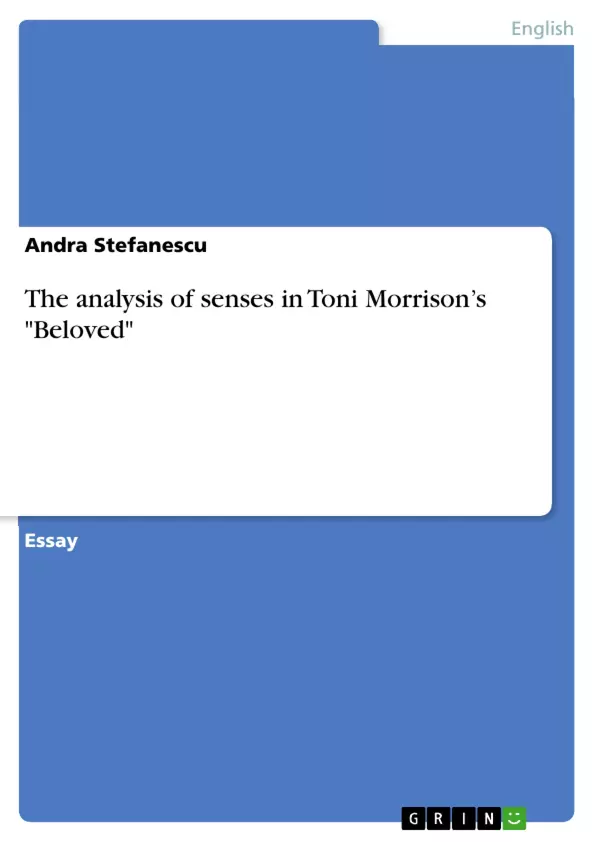Though legally abolished in 1807, slavery was not entirely stopped until the Civil War; black people were tormented, forced to give up their languages, names and religions, that is, their own identities. “Throughout the history of the New World, African American women were among the most oppressed, because they suffered the double jeopardy of being black and female, experiencing racism and sexism at the same time.”1
Set during the Reconstruction era in 1873, Beloved presents the period of slavery and its aftermath, describing the fate of some former slaves to whom their past represent a burden they desperately try to forget. Sethe, the protagonist, is a young woman who freed herself, but whose life remains haunted by the shadows of the past, symbolized by the spirit and flesh of her deceased daughter, Beloved, whom she murdered eighteen years earlier, “in an attempt to spare her the experience of her own sufferings”2.
Inhaltsverzeichnis (Table of Contents)
- The Analysis of Senses in Toni Morrison's Beloved
- Chapter 1: The Reconstruction Era
- Chapter 2: The Arrival of Paul D
- Chapter 3: Memories and Flashbacks
- Chapter 4: Denver's Viewpoint
- Chapter 5: The Carnival
- Chapter 6: Shadows and Symbols
Zielsetzung und Themenschwerpunkte (Objectives and Key Themes)
This essay explores the significance of the five senses in Toni Morrison's novel, Beloved, analyzing how they contribute to the novel's thematic exploration of slavery, memory, and the enduring power of love.
- The impact of slavery on the senses and the characters' identities
- The role of memory and the past in shaping the present
- The power of love and its capacity to heal and connect
- The significance of visual imagery and its connection to language
- The importance of nature and its symbolic role in the narrative
Zusammenfassung der Kapitel (Chapter Summaries)
- Chapter 1: The Reconstruction Era: The chapter sets the historical context of the novel, exploring the legacy of slavery and its impact on the lives of former slaves like Sethe, the protagonist. Sethe's past haunts her present, symbolized by the spirit of her deceased daughter, Beloved, whom she murdered to spare her from the horrors of slavery.
- Chapter 2: The Arrival of Paul D: The arrival of Paul D, a former slave and friend of Sethe, introduces a new dynamic into the household. Denver, Sethe's second daughter, is initially resentful of Paul D's presence but gradually comes to appreciate his warmth and affection.
- Chapter 3: Memories and Flashbacks: Paul D's arrival triggers a series of flashbacks that reconstruct the story of their lives under slavery. Denver struggles to cope with the pain and trauma of the past, particularly the story of Sethe's escape and the murder of Beloved.
- Chapter 4: Denver's Viewpoint: The chapter explores Denver's perspective on her mother's relationship with Paul D, her own feelings of insecurity, and her desire for her mother's undivided attention.
- Chapter 5: The Carnival: Sethe, Denver, and Paul D attend a carnival, where the author explores the senses through vibrant visual imagery, sound, and taste. Paul D's optimistic spirit and warmth create a temporary sense of joy and unity, but the chapter also foreshadows the looming presence of Beloved.
Schlüsselwörter (Keywords)
The key concepts explored in this analysis include: slavery, memory, love, identity, senses, visual imagery, language, nature, symbolism, and the Reconstruction Era.
- Quote paper
- Andra Stefanescu (Author), 2006, The analysis of senses in Toni Morrison’s "Beloved", Munich, GRIN Verlag, https://www.grin.com/document/91269



